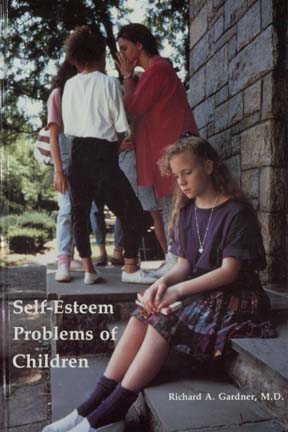|

|
Self-Esteem Problems of Children Specific Ways for Enhancing Child Patients’ Self-Esteem |
|
HIGHLIGHTS
|
|
Most patients involved in psychotherapy deal with the issue of self-esteem. School guidance counselors and psychologists often recommend to teachers that they raise a child's self-esteem. Group meetings designed to help people with their self-esteem are widespread. Books on the subject are selling briskly. Accordingly, self-esteem is very much in vogue at this time. A common question is: How does one go about helping people raise their self-esteem? Believing that the usual approaches to raising self-esteem are often oversimplified—and therefore unlikely to work—Dr. Gardner has written what may be the most comprehensive work yet published on the subject. Some of the topics dealt with are parental feedback, shame, guilt, attitudes toward one’s own body, attitudes toward one’s ethnicity and heritage, competence, praise, competition, sibling rivalry, perfectionism, denial and rationalization of deficits, true vs. false pride, love (including romantic love), feelings of impotence, self-assertion, power, anger inhibition, parental overprotection, values and ethics (including the work ethic, honesty, machismo, “happiness,” and pleasure), and the learning-disabled child. Throughout Gardner’s book particular emphasis is given to the relationship between the aforementioned factors and school performance. The etiology, psychodynamics, and manifestations of these and other issues are dealt with in depth. Clinical vignettes (often verbatim) are presented, describing in detail Gardner’s psychotherapeutic approaches to helping children with low self-esteem. Creative Therapeutics considers this book to be the most comprehensive text yet published on the psychodynamics of low self-esteem, as well as the most explicit in detailing the psychotherapeutic approaches to its alleviation. This volume is a landmark contribution. |
